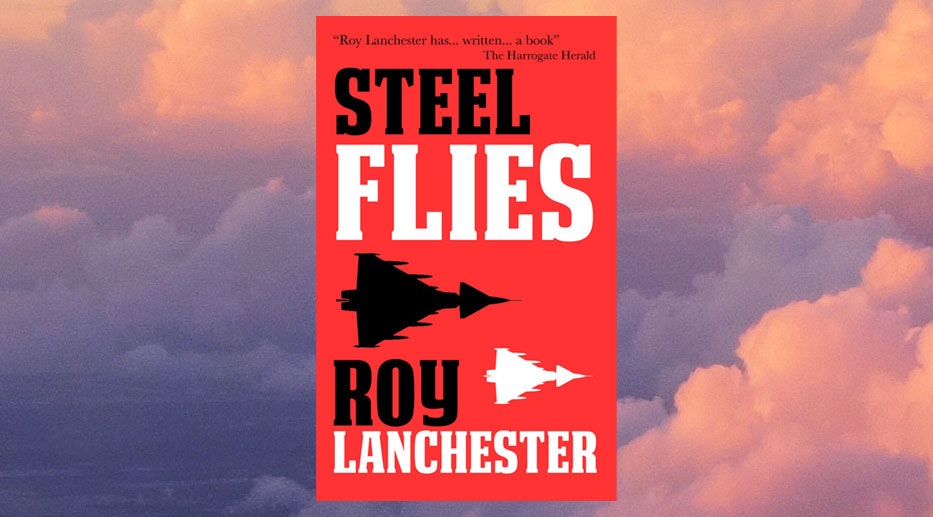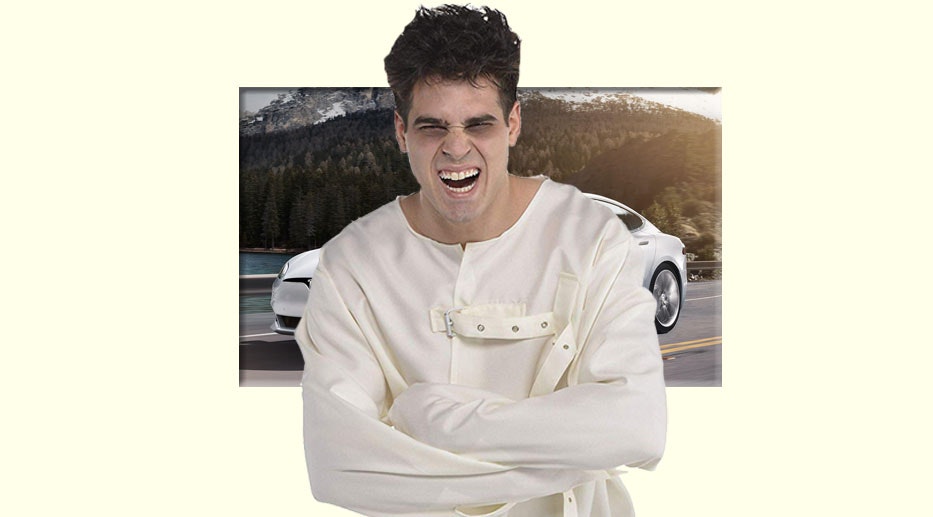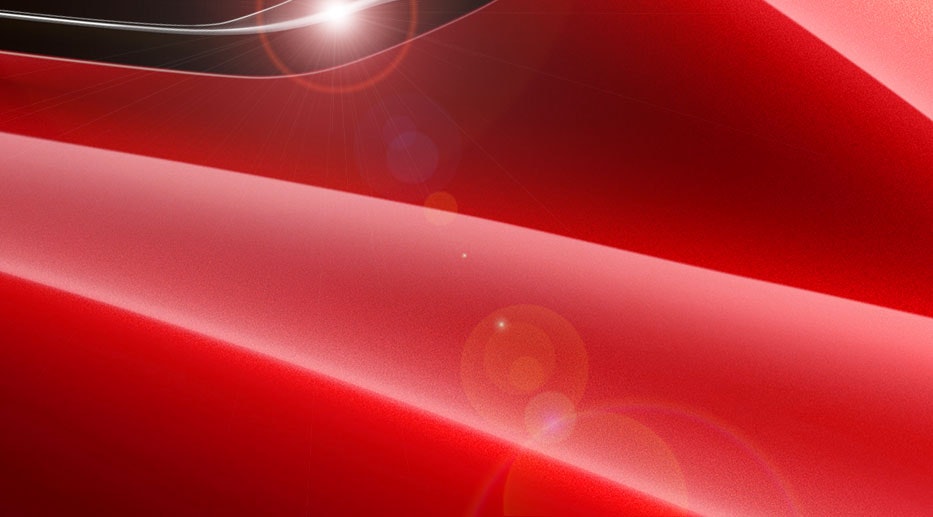
Well-oiled car correspondent's great lost novel is published at last, as he explains here
1983 was quite a year to be alive in the United Kingdom. Mrs Thatcher was returned to power with a sturdy majority that would permit her to continue her good works. The Argentinians were still reeling from being given a bloody nose over their idiotic attempts to steal the Falklands. Exciting new cars were being announced faster than I could go on all the launches, including the Austin Maestro, Datsun Stanza and Ford Fiesta mk2 (although, in fairness, I did make it on the launches of all of those).

1983 was also an exciting year to be me, Roy Lanchester, and not just because of the aforementioned new cars. Back in ’83 I was one of Britain’s foremost newspaper motoring correspondents and the car industry was queuing up to wine me, dine me and then give me a free branded jacket. I’ve still got some of them. 1983 was also the year in which I fell in love with the woman who would eventually become my second ex-wife though at the time I had no idea she was an undercover lesbian, obviously.
However, if I have made 1983 sound largely excellent that was not always the case since hanging over all of us in that year was the dark cloud of Communism which constantly threatened to rain down upon us nuclear Armageddon, along with cheap and badly made motor cars. This was what we called the Cold War, and it was this most chilly of all conflicts that inspired another notable event of 1983; my decision to write a novel. I penned it in my spare time and when it was done I was very proud of it, thinking it was pretty excellent, actually. Unfortunately, various publishers disagreed and my copy of the manuscript was eventually left in a drawer, a box and then another drawer. Happily, it survived a flood and both of the fires until last year when my some-time associates at Sniff Petrol got wind of this work, which is called STEEL FLIES, and asked if they might publish it at last. Naturally I said maybe, engaged in some robust debate about remuneration, and then signed something once they’d plied me senseless with wine, which was actually my plan all along so more fool them!
I’ve been asked to ‘keep it short’ on this intro and merely tell you that the book is an exciting tale of espionage and double-dealing set against the backdrop of the Cold War, featuring a classic case of blue-eyed British ingenuity against potato-faced Soviet dirtiness. The hero on the correct (i.e. British) side is a special agent called Trent Steel. In the extract below, we meet our man for the first time. I hope you like him, and the book, which I must insist that you buy since, if anything, it has matured like fine cheese or wine over the last 37 years and is, in my humble opinion, excellent. Enjoy it! But, more importantly, buy it!
An extract from Steel Flies by Roy Lanchester
Trent Steel awoke instantly. His ocean blue eyes flicked open as they always did and immediately scanned their surroundings. His brain needed only a split second to inform him that this was his bedroom. The framed items on the wall adjacent to the bed told him as much; the photograph of himself at the summit of Everest; the certificate commemorating many years’ service in the S.A.S.; the letter from the grateful peoples of South America giving thanks for restoring order to their governance; letters of personal thanks from over five presidents and prime ministers; all of these things were familiar and always there. The womanly shape softly breathing under the black silk sheets next to him was not a permanent fixture. In one smooth move Steel pivoted around an axis at the base of his spine, simultaneously dropping his legs to the floor and bringing his torso upright to expertly exit the bed. At the same time, he casually thumbed a button on a high-tech control panel next to the bed and in an instant the floor-to-ceiling black silk curtains electronically retracted to reveal the full majesty of London stretching away 33 floors below. Yes, thought Steel, there were certain benefits to having the only private residence at the top of the Post Office Tower. He strolled over to the full-length windows and surveyed the mighty city below, dressed only in a pair of well-tailored underpants (though such was the height of his residence that only someone in a helicopter would have been able to see his muscular torso and legs on display, above and below the pants respectively).
“Ah, London,” he thought silently. “How many people in this fair city have I killed, kissed or karate chopped in the windpipe?” The answers were several, several and four. Behind him Steel heard a stirring in his ultra-king-sized bed and turned to see the dark-haired head of Eleanor Welcome swivelling owl-like from its prone position on the pillow into a more advantageous angle with which to look at the blonde-haired, blue-eyed, firm-jawed man standing before her, slightly silhouetted against the bright blue sky of a sunny London morn.
“I’m sorry, did I wake you?” asked Steel.
“No, I was rousing anyway,” she replied softly, her mind casting back to last night’s love making which was perhaps the highest quality she had ever encountered.
Steel heard the click of a front door opening elsewhere in the flat but felt no alarm for he knew exactly what was to happen next. All at once four fully clothed and highly armed men burst into the room and focused their weapons on the female in the bed.
“Yes,” sneered Steel. “It’s definitely time to get up, Eleanor. Or should I say, Soviet double-agent Natalia Olatov? These gentlemen are officers of the Special Operations Department of Her Majesty’s Government of Great Britain and they had a key to my flat plus the access code to the downstairs door with my blessing. You’re under arrest for spying!” he finished triumphantly, and with that the men dragged Eleanor/Natalia from the bed, threw a large coat around her nakedness, and dragged her attractive but filthily Communist backside out of the premises and straight to a prison cell, via a short trip in a specially-designed van.
“Game, nyet and match,” smiled Steel as the arrest team and the screaming double agent closed the front door behind them. The chiselled British man then moved across the spacious living/open plan kitchen area with a view to taking a shower in order to wash the stench of Soviet deception off his body. As he did he was surprised by the sudden ringing of his telephone, but not the regular ‘phone for this was the special second number known only to a select group of people at Steel’s place of work; the Special Operations Department (S.O.D.), a highly secretive covert unit created to solve particularly tricky issues with foreign spying, espionage and related nuisances, based in a top secret office situated in an abandoned warehouse near Tower Bridge and staffed by an elite team of highly skilled agents, of which Trent Steel was one and definitely the best, though he would never say that himself because he wasn’t a boastful twit.
“Hello?” said Steel after he had lifted the receiver to his head.
“Good morning, Steel,” announced a voice at the other end of the line which Steel recognised instantly as belonging to Sir David Shrewsbury, the S.O.D. chief. Although Sir Shrewsbury was technically Steel’s boss, they spoke to each other in a very level-pegging sort of manner since the former had a great deal of respect for the latter’s skill and experience and the younger man vice versa, Shrewsbury being 62 to Steel’s 35, so to speak.
“Good morning, Sir David,” replied Steel, expertly cupping the telephone in the optimum operating position while preparing a coffee percolator with his other hand. “How can I help?”
“You’re familiar with the EX401 programme?” asked Shrewsbury.
“Of course, sir,” replied Steel respectfully. “An all-new, all-British multi-role fighter to be built by British Aircraft Holdings, powered by two Rolls-Royce RB238 engines, capable of Mach two on full afterburner, carrying a range of weaponry including, if necessary, nuclear bombs, and currently at the prototype stage but due to enter service in the middle-eighties under the service name of, I believe, Sky Hammer.”
“Bang on as ever, Steel,” rejoindered Shrewsbury admiringly. “There’s just one problem; yesterday morning the only prototype was lost into and then under the North Sea.”
“That will certainly set the project back,” noted Steel.
“It will,” agreed Shrewsbury. “But that’s not the reason I’m telephoning. How quickly can you get to headquarters? I’ve got the R.A.F. chap on his way and I’d like you here as soon as humanly possible to hear what’s what.”
“I’m on my way,” replied Steel crisply and with that he and Shrewsbury said goodbye in the normal manner before he completed his coffee making process that had been going on during the whole of the above conversation before heading briskly to the bedroom where he abandoned the shower plan, applied a freshening swipe of high-tech gel deodorant stick to each under arm and the crotch area, pulled on some precisely tailored slacks and a black roll neck, took a swig of the coffee that actually he had poured into a mug when it was made earlier, then grabbed his car keys and headed for the lift that would deliver him as fast as technology would allow into the underground car park where his jet black Lotus Esprit Turbo was waiting. In an instant Steel twisted the ignition key and the 2174cc, turbocharged, 210 horsepower engine burst into life before its operative coolly selected first gear on the standard five-speed gearbox, released the handbrake, let up the clutch to perfection and allowed the sleek British machine to surge forwards and up the ramp that led to the automatic roller shutter door that permitted exit onto the street.
From here Steel drove briskly down University Street, right onto the A400 then left onto the A40, right onto the A4200 Kingsway following it round onto Arundel Street, then down round the Embankment Gardens and left onto the A3211 that ran along the Embankment parallel to the River Thames until it met the A100 Tower Bridge road which took him across Tower Bridge itself, after which he turned sharply left into Queen Elizabeth Street and left again into Curlew Street. At this point the low-slung Norfolk-built sports car might have seemed to be heading to a dead end but Steel knew better and continued to drive between the crumbling old warehouse buildings towards what appeared to be a solid, if vandalised, brick wall. Of course, it was nothing of the sort (solidity-wise, though it really was vandalised) and the ‘brickwork’ smoothly slid aside to reveal the access ramp to the spacious indoor parking area that was one of the reasons Steel so enjoyed working for S.O.D.
STEEL FLIES is available as a paperback or ebook exclusively from here


